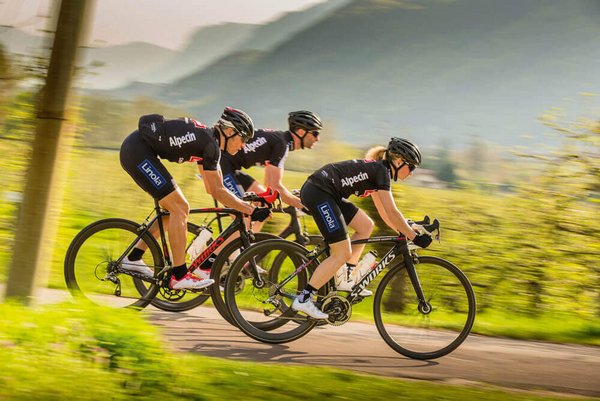Tips for cycling training: Preventing chafing when cycling
Anyone who cycles regularly is probably familiar with this problem: the appearance of unpleasant skin irritations after a particularly intensive training session, often on a hot day which has caused heavy sweating. Caused by two areas of skin rubbing against each other, the effect is aggravated when the skin is also very wet from sweat. With cycling, these sore spots mostly develop on the upper thigh or on the buttocks. As the irritated skin would be rubbed again during the next training session, further training is not usually possible at first. In itself, this is a good reason to try to avoid any such skin irritation.
Prevent chafing by wearing suitable cycling clothes
In many cases, you can avoid sore skin just by wearing the right clothing when cycling. What do you need to know to choose the right training clothes?
- Cycling jerseys and pants should be as tight as possible, and most importantly, they should not be loose when walking to prevent the skin areas at risk from rubbing against each other.
- It is also important to use breathable sports clothes so that sweat does not build up on the skin and any moisture can easily evaporate.
- The best choice is specific cycling shorts made from an elastic material that adapts perfectly to the shape of your body. This fully protects all your skin. Do not train in shorts that are torn or wrinkled, as these areas are at particular risk of painful chafing.
- For effective training, it is important to use washed and dried cycling shorts. Simple bacteria can colonise damp or previously worn shorts and aggravate the skin all the more.

The right saddle and a good training workload are critical
A saddle that is not adapted to your body can also rub unpleasantly against your skin. A good saddle will provide adequate padding for your seat. You should therefore ask a specialist shop for advice about which saddle is right for you. Skin chafing often develops after longer breaks in cycling training. In these cases, the key is to start slowly in the first training session and to steadily increase the training workload.
Protective creams prevent chafing
In addition, it is worth preventing the appearance of sore spots due to chafing by using a protective cream, such as Linola Protective Balm. This should be applied before training to those areas on the thighs and buttocks that are prone to chafing. It creates a protective layer over the skin and prevents dangerous rubbing, including between the skin and the training clothing.
Anti-inflammatory ointments can relieve sore areas
If it is too late and you have already cycled yourself sore, anti-inflammatory and skin-soothing ointments can bring relief. Wash the affected areas with warm water and apply a suitable cream bought from a pharmacy. Ensure that the sore skin receives enough air to help the irritation reduce quickly. We recommend caution if the sore spot has become an open and oozing wound. Do not start training again until your skin has recovered. If you run as well as cycle, you will find further training tips for runners here.
Read more here about: Running tips Avoid friction when running.
